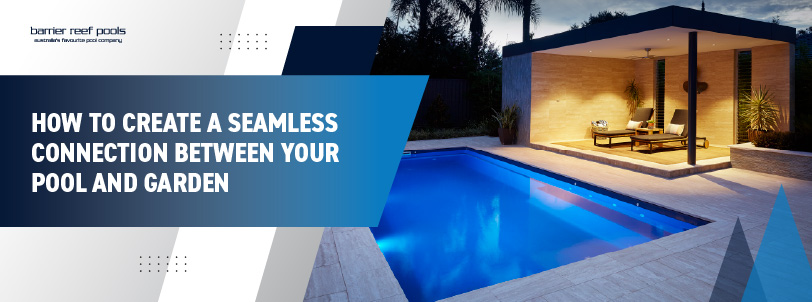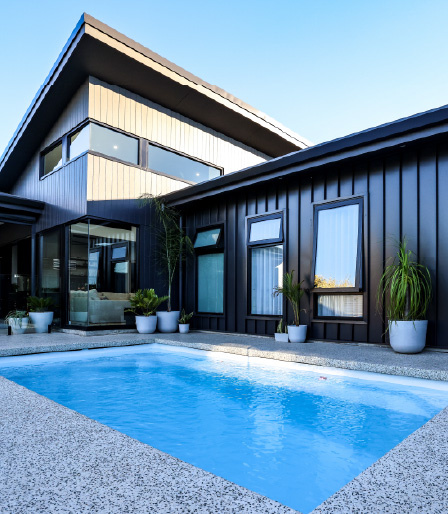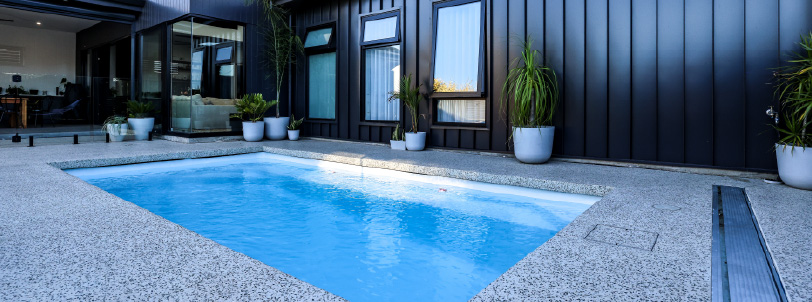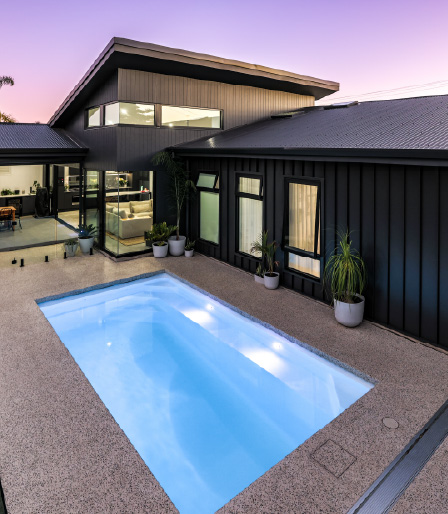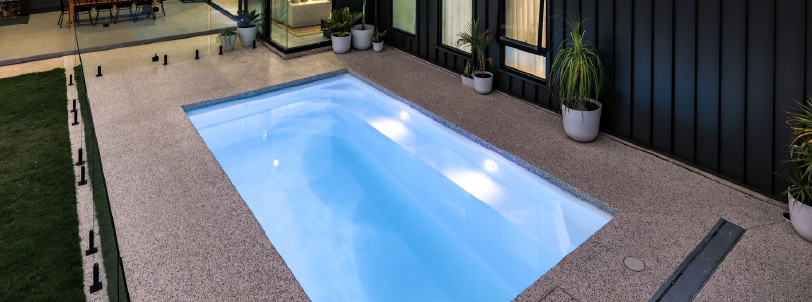Creating Multi-Zone Pool Areas: Relax, Entertain, And Swim Without Clashing Spaces
A family pool isn’t just for swimming anymore—it’s a social hub, a play zone, and a place to unwind after a long day. But when everyone’s using the same space in different ways, things can get crowded or chaotic fast. Kids splashing while someone’s trying to relax, or guests arriving while the pool toys are everywhere—it’s a recipe for frustration. The solution? Multi-zone pool areas. By designing your outdoor space with clear zones for different activities—relaxation, entertainment, and swimming—you can make it more functional, safer, and more enjoyable for the whole family. Whether you’re planning a new pool or improving an existing setup, here’s how to create smart, separated zones that work together seamlessly.
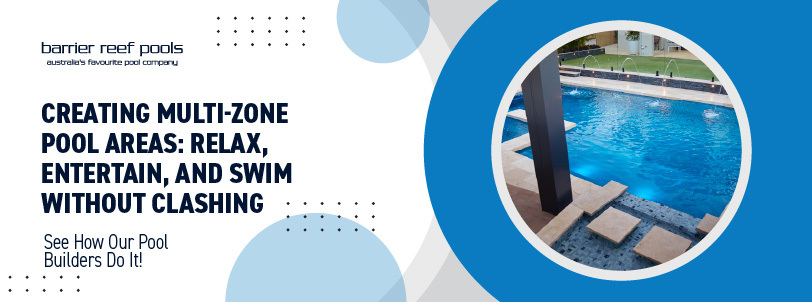

What Is a Multi-Zone Pool Area?
A multi-zone pool area is a layout that separates your outdoor space into dedicated sections based on use. This helps prevent activity clashes (like kids doing cannonballs next to someone sipping a drink) and makes the space feel more organised and welcoming.
Typical zones might include:
- Swimming zone: The main pool area for laps, play, and cooling off.
- Lounge/relaxation zone: Sunloungers, daybeds, and shaded spots to unwind.
- Dining or entertaining zone: BBQ area, outdoor dining set, or bar seating.
- Kids’ play area: A space for water toys, shallow splash zones, or nearby grassed areas.
Spa or wellness zone: If you’ve got a spa, outdoor shower, or sauna.
Why It Matters for Families
A well-zoned pool area isn’t just about aesthetics—it’s about practicality.
- Improved safety: Kids can swim or play in view without being underfoot.
- Easier entertaining: Guests can enjoy food and drinks away from the splash zone.
- Less mess: Towels, drinks, toys, and gear stay in their own areas.
- More enjoyment: Everyone can use the space their way—without stepping on each other’s toes.
Planning Your Pool Zones: What to Consider
Before you start shifting furniture or calling a landscaper, think about how your family actually uses the space. Here are a few things to guide your layout:
1. Foot Traffic Flow
Design natural pathways between zones—especially between the house and the pool, or pool and bathroom. Pavers or decking strips can help guide movement and keep wet feet off the grass.
2. Sun and Shade
Position lounging and dining areas where they’ll get the most use based on the time of day. Consider pergolas, umbrellas, or retractable awnings to create shade where needed.
3. Views and Supervision
If you have young kids, make sure you can see the pool from the kitchen, outdoor lounge, or dining area. Clear sightlines help with supervision and create a more connected feel between zones.
4. Noise Control
Separate noisy play or splash zones from quiet spaces using distance, fencing, hedges, or planters. A bit of soft landscaping can go a long way in blocking noise without feeling closed in.
5. Lighting
Layered outdoor lighting can help define zones—soft ambient lighting near lounges, task lighting in the BBQ zone, and underwater LEDs in the pool for night swims.
Ideas For Zoning Your Pool Area
Here’s how to build out each zone for practical use without it feeling cluttered or disconnected.
Swimming Zone
This is your core pool space. Give it breathing room by keeping furniture, fencing, or plants set back enough for easy access and safety. Include:
- Non-slip paving around the pool
- Poolside hooks or a storage bench for towels and goggles
- Clear sightlines from the house or lounge
If you’re building new, consider including a sun shelf or shallow ledge for kids or lounging in the water.
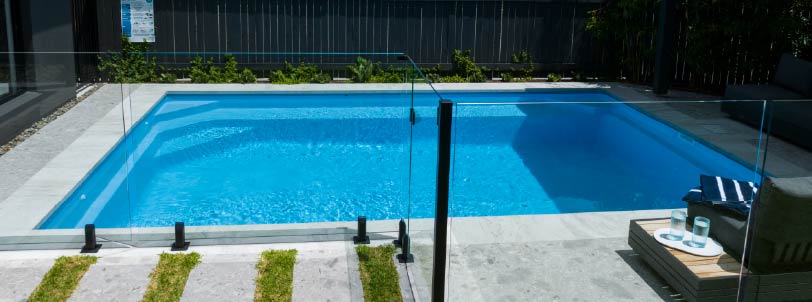

Planning Your Pool Zones: What to Consider
Before you start shifting furniture or calling a landscaper, think about how your family actually uses the space. Here are a few things to guide your layout:
1. Foot Traffic Flow
Design natural pathways between zones—especially between the house and the pool, or pool and bathroom. Pavers or decking strips can help guide movement and keep wet feet off the grass.
2. Sun and Shade
Position lounging and dining areas where they’ll get the most use based on the time of day. Consider pergolas, umbrellas, or retractable awnings to create shade where needed.
3. Views and Supervision
If you have young kids, make sure you can see the pool from the kitchen, outdoor lounge, or dining area. Clear sightlines help with supervision and create a more connected feel between zones.
4. Noise Control
Separate noisy play or splash zones from quiet spaces using distance, fencing, hedges, or planters. A bit of soft landscaping can go a long way in blocking noise without feeling closed in.
5. Lighting
Layered outdoor lighting can help define zones—soft ambient lighting near lounges, task lighting in the BBQ zone, and underwater LEDs in the pool for night swims.
Ideas for Zoning Your Pool Area
Here’s how to build out each zone for practical use without it feeling cluttered or disconnected.
Swimming Zone
This is your core pool space. Give it breathing room by keeping furniture, fencing, or plants set back enough for easy access and safety. Include:
- Non-slip paving around the pool
- Poolside hooks or a storage bench for towels and goggles
- Clear sightlines from the house or lounge
If you’re building new, consider including a sun shelf or shallow ledge for kids or lounging in the water.
Relaxation Zone
Create a peaceful spot where adults can unwind while still being part of the action. Think:
- A pair of sunloungers or a daybed
- Side tables for drinks or sunscreen
- Shade solutions (umbrellas, pergola, or shade sail)
- Soft outdoor cushions or throws
Position this away from high-traffic pool entry points to avoid splashes and noise.
Entertainment Zone
This area is all about food, drinks, and gathering with friends. Include:
- Dining table or bar-height seating
- BBQ or outdoor kitchen setup
- Drink station or small fridge
- Festoon lights or pendant lighting for evening use
Place it close to the house for easy access to the kitchen, or position it as a central hub between the pool and garden.
Play Zone
Keep kids’ play separate from quieter zones to avoid clashing moods. A good play zone might have:
- A patch of lawn or artificial turf nearby
- A shaded area for breaks and snacks
- Space for toy storage (a deck box or storage bench)
- If space allows, a small splash pad, water table or pop-up sprinkler setup
Use soft fencing or raised garden beds to create a subtle border if needed.
Spa or Wellness Zone
If you’ve got a spa, sauna, or even just an outdoor shower, give it its own feel. This could include:
- Privacy screens or planting
- Natural materials like timber decking or stone
- Comfortable seating and soft lighting
Keep it separate from the kids’ zone if possible, so it remains a true escape.
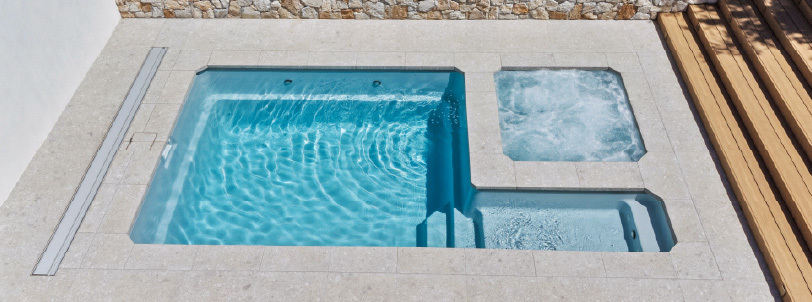
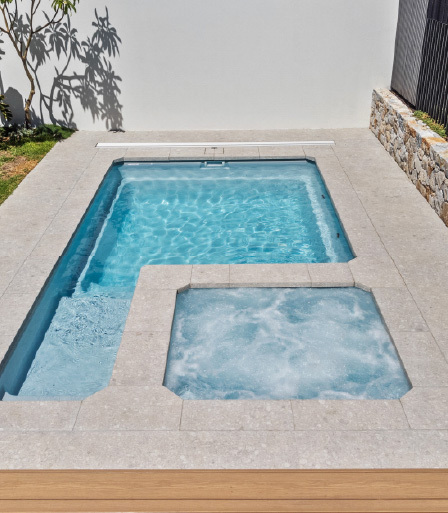
Creating Separation Without Walls
You don’t need walls or fences to separate zones effectively. Here are a few low-key ways to divide areas while keeping things open and family-friendly:
- Decking changes: Use different levels, timber directions, or inlays to define spaces.
- Outdoor rugs: Great under lounges or dining tables for a soft visual break.
- Furniture placement: Angle seating away from pool splash zones to carve out space.
- Greenery: Use hedges, pots, or raised planters as soft dividers.
Feature elements: A fire pit, water feature, or sculpture can help mark transitions between areas.
How To Make It Work in Smaller Spaces
You don’t need a massive yard to create zones. Even small backyards can benefit from smart layouts. Try:
- A corner daybed with storage underneath to combine relaxation and toy storage
- Folding or stackable furniture to maximise flexibility
- Vertical planting or wall art to add visual separation
- Combining zones—like a lounge/dining combo with a dual-purpose table
It’s all about clarity of function—making sure every bit of space serves a purpose.
A Space That Grows With Your Family
A multi-zone pool area doesn’t just help with today’s needs—it can evolve with your family. You might start with a kid-friendly splash space and transition to a more social or relaxation-focused layout as the kids grow.
By investing time into planning and creating distinct areas, you’ll avoid the frustration of clashing activities and make your backyard feel like an extension of your home—one that suits everyone’s needs.
Whether you’re hosting a BBQ, lounging with a book, or watching the kids swim, a well-zoned pool area keeps things running smoothly, without stepping on each other’s toes.
Get a Free Quote at this page today to start your pool journey with Barrier Reef Pools


